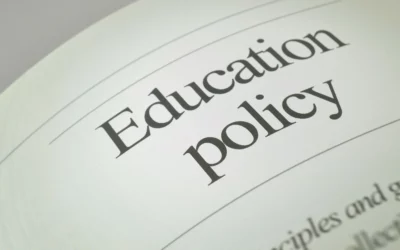
Written by Christine Cooke Fairbanks
March 14, 2024

Efforts to increase transparency of instructional materials used in public school classrooms have focused on preventing controversies. That is, they have focused on checking “rogue teachers” who may be instructing students inappropriately.
While the preventive potential of curriculum transparency is valuable and appropriate, a singular focus on it limits the possible benefits of curriculum transparency.
Scholarly literature illustrates that transparency of curriculum has broader benefits on academic outcomes – especially for underrepresented students. These deserve to be part of the policy conversation.
Parental involvement
Research connects parent involvement with better student achievement. Since parents have the greatest influence on a child’s life and the fundamental responsibility for their child’s education, this is largely common sense.
There is an argument to be made that when schooling is transparent and parents have access to what’s happening in the classroom, they are more likely to use the information to be involved in their child’s education. In turn, this helps students succeed academically.
One can imagine how a parent might constructively use information about instructional materials to benefit student learning: asking students what they’re learning to discover student learning gaps or struggles; probing about upcoming assignments; and communicating with teachers with more informed questions about a student’s performance.
While some parents are already engaged without transparency, creating easier access to student curriculum will expand the pool of parents willing to engage.
Belonging and confidence
Some studies showed that efforts to be more transparent about instruction and assignments in higher education led to positive academic outcomes.
For instance, according to one study, transparent instruction (including transparently designed assignments) led to increased “academic confidence, sense of belonging, and awareness of their mastery of the skills that employers value most when hiring.” Interestingly, while benefits were significant overall, they were even more so for students who were first-generation, low income or underrepresented.
Another study showed a similar outcome: Students in higher education had an increased sense of belonging when learning outcomes were made transparent. One study suggested that transparent assignment design helped underrepresented students with “unwritten rules of college.”
Furthermore, one report of higher education notes that transparent teaching methods (where expectations and purposes of a course or assignment are made clear) improve learning outcomes of underserved higher education students in introductory courses and also helped mitigate some of the negative impacts of the virtual classroom on student learning outcomes.
Aside from transparency of instruction, research suggests that perceptions of the clarity and organization of instructors has been linked to better student outcomes. Certainly, it seems likely that improved transparency of curriculum or instructional materials could aid in giving students this greater clarity.
These research findings on transparency point out some possible benefits in K-12 education if they were implemented in those younger grades. Students, especially those who may be in underrepresented groups or who are at-risk academically, may do well with added transparency because it empowers them with information and context upfront that helps them avoid learning pitfalls before they fall into them.
The same goes for the parents of K-12 students who are trying to navigate their child’s school: transparency can communicate course expectations, delineate “unwritten rules” of an institution, and add to their confidence in partnering with schools and teachers. In an era where communities are attuned to making education equitable and welcoming to underrepresented groups, this benefit is worth considering for parents of students in all grade levels.
Relevance and focus
Transparency methods in the higher education space also led to increased student understanding of the relevance of a course and helped students understand how assignments connected to the course.
In the K-12 space, this could be an important result of transparency, particularly with students who struggle to focus because of a perceived lack of relevance to their goals or lives. It could also help parents assist students in selecting courses in the secondary grades when students have more choice and autonomy over which courses they take.
Conclusion
While more research needs to be done around the academic benefits of curriculum transparency for students, data suggests that the more transparent the instruction, the better students fare for a variety of reasons. Some of this seems like common sense. But in the discussion about K-12 transparency, common sense is sometimes overlooked.
Rather than high-centering on preventing classroom controversies, policymakers ought to study how curriculum transparency helps students academically. Students will benefit from what lawmakers learn and apply.
Jimena Villanueva Kiser and Megan Myres McMillan contributed research to this piece.

Insights: analysis, research, and informed commentary from Sutherland experts. For elected officials and public policy professionals.

- Reason suggests that curriculum transparency can increase parental engagement, which can help students succeed in school.
- Research suggests that transparency has the potential to help first-generation, low-income and underrepresented students with many academic outcomes.
- Policymakers ought to study the impacts of curriculum transparency on academic outcomes, not just focus on preventing controversies in the classroom.
Read More
Education policy to consider during the 2024 election season
Here’s a look at what each presidential candidate is likely to focus on in education, given their track records and campaign platforms.
Ignoring the text of the Constitution is a mistake
A written Constitution is entirely superfluous if the document is simply meant to give the people what they want.
What you need to know about election integrity
It should be easy to vote and hard to cheat. This oft-quoted phrase has been articulated as a guiding principle by many elected officials wading into voting and election policy debates in recent years. So why has this issue been so contentious, and what’s the solution?


